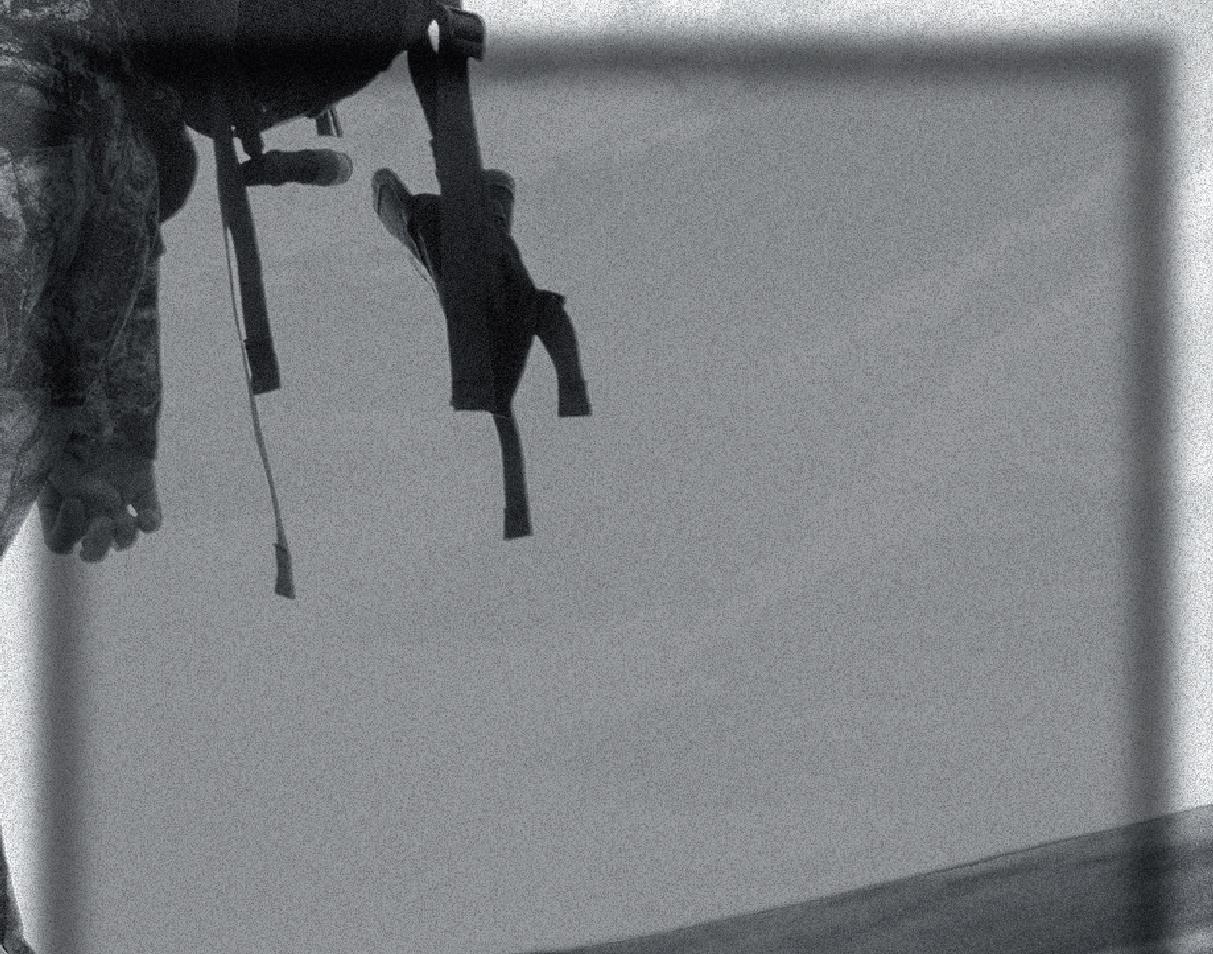












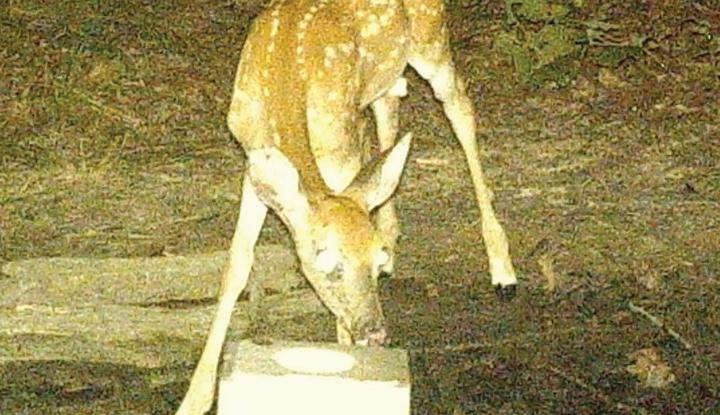 Photo and Text
By JOHN WINKELMAN
Photo and Text
By JOHN WINKELMAN
The first time I saw salt in action out doors was on a big old tree stump in Cam den County. It had turned the remaining wood and root system into a small puddle at the top of a ridge.
I was familiar with the salt block and its attractiveness to animals from Grandpa Joe’s barn trough, where the cattle would stop by for a taste from time to time. Similarly, the deer in the woods would visit what remained of that salty stump and the water that collected in its vacancy.
Since those days many years ago, I have created several sites we call salt licks. In the woods and even in the forest beyond my backyard, they make great locations for trail cameras, but I have to wonder if I am doing a disservice to the deer and other wildlife that stop by muddy wet
spots and their salty soil.
With the discovery of chronic wasting disease in Missouri, it is illegal (with few exceptions) to place salt or any supplemental product for deer in a CWD Man agement Zone. The potential for disease spread is probably reason enough to stop doing it everywhere. But in reality, are we causing troubles for the deer or the environment?
I asked that and several other questions to Jason Isabelle, cer vid program supervisor for the state Department of Conserva tion.

“In terms of deer diet, salt licks should not cause detrimental effects to the local deer population because deer seek out the minerals that they require at various times of the year and can regulate the amount they consume,” Isabelle said.
The caveat comes in the potential for disease risk. Even in areas outside of the man agement zones, unnaturally attracting congregations of deer can have negative or even deadly complications.
“These sites, depending on their size, can also serve as places where hemorrhagic disease (HD) can be spread. The midge that serves as the vector of the disease needs water to reproduce, and areas with stagnant, muddy water are a preferred place for eggs to be laid,” Isabelle said. “By far the greatest risk of using salt licks is the spread of CWD. In areas where the disease has not been detected, the risk is probably very low. However, where the disease exists, mineral licks can serve as sites of high disease transmission risk.”
The environmental impact is limited, but a salt lick will cause nearby vegetation to die. Soil compaction from the concentration of animals also is detrimental in the surrounding area. If runoff from the salt sites reaches freshwater areas like
small ponds, the aquatic life including frogs and fishes can be negatively affected, he said.
The answer to why salt blocks and mineral sites collect and maintain water or moisture sounds scientific but is relatively simple and sure.
“Salt is a hygroscopic com pound, which means that it attracts water from the environ ment very well,” Isabelle said. “Based on its chemical proper ties, salt has a strong attractive force to water molecules which are polarized. Additionally, the deer use of those locations likely compacts the soil, allowing it to retain water. Deer will also consume the soil at the salt block sites, creating a depression where water can pool.”
In addition to the cheap 50-pound salt blocks we have used to seed our sites, we have tried multiple commercial con coctions that promised mineral supplements to help deer grow huge antlers or special scents to attract them from far and wide.
This fawn is adorable at the salt block, but the deadly potential for disease spread outweighs any benefits of cute trail camera pictures.
The state biologist said science doesn’t support those claims.
“Research has not demon strated that antler characteristics are affected by mineral supple mentation,” Isabelle said. “Deer are typically able to acquire all the minerals that they need from the forage that they consume.”
So the extra salt itself is not harmful, but the potential for other trouble is real. For the hunting season, the best locations for trail cameras are seasonal food sources, licking
branches, and edges where deer trails or old roads meet food plots, agricultural fields or water sources, Isabelle said.
As for stump removal proper ties, almost any other process is more efficient than a salt block.
John Winkelman is Associ ate Editor for Outdoor Guide Magazine. If you have story ideas to share, e-mail ogmjohnw@aol.com, and you can follow John on Twitter at @ johnjwink99 and find more news at johnjwink,com.


There’s something special about fishing in Missouri. That unmistakable pink flash of a Rainbow Trout turning in the current, the red dots of a Brown rising into shallower water, the rush of a Largemouth striking the surface. You

can cast a line anywhere, but you can only fish like this in Lebanon, Missouri. Make your next fishing trip count.


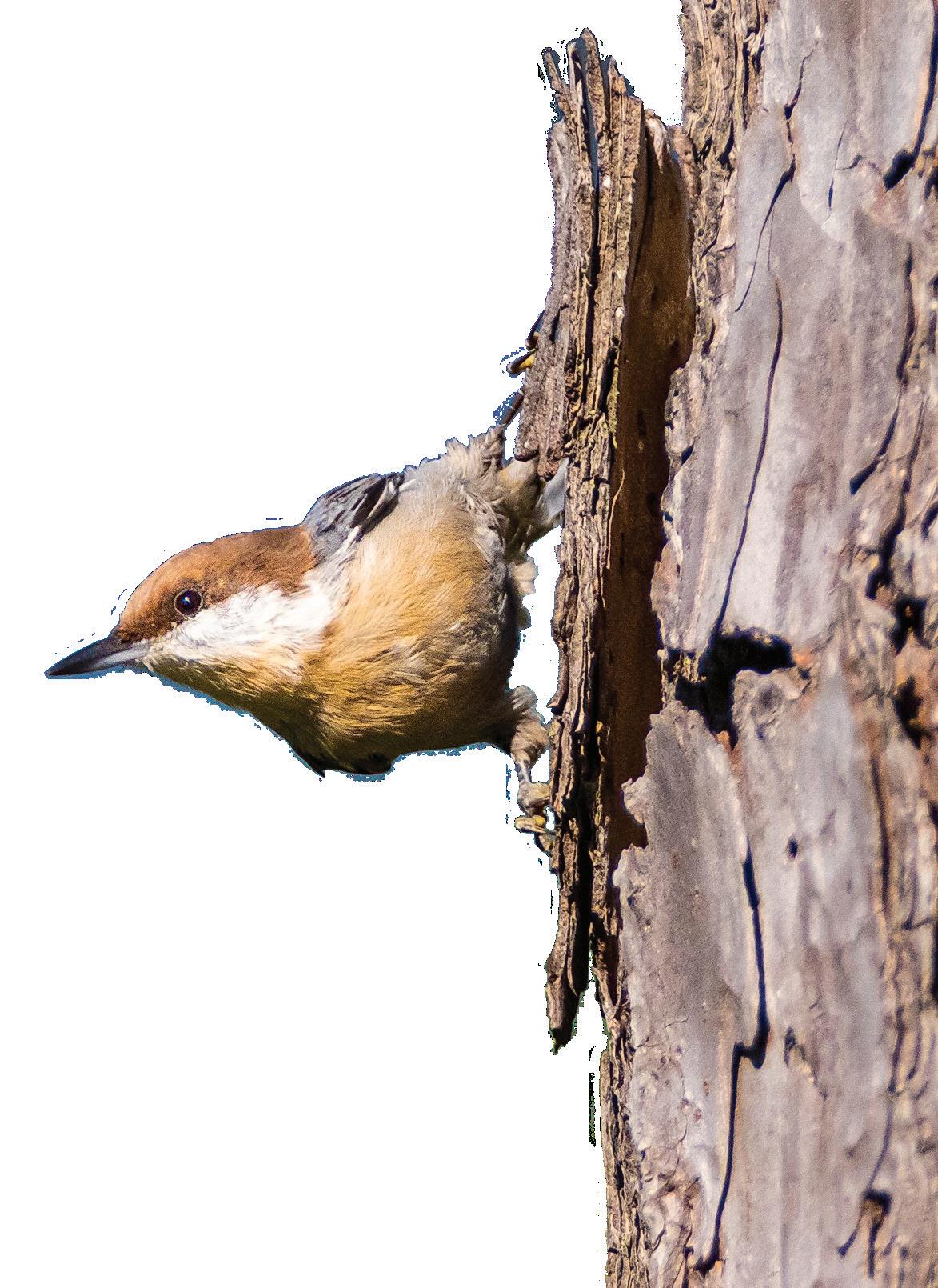


I’m amazed at the depth of information available to bass fishermen these days.
Want to learn how to fish a Carolina rig? How about methods to catch off-shore bass? Or maybe some tricks to catch them in the spring?
Access Google, and you will be flooded with YouTube videos, Facebook and Twitter posts, websites and magazine articles.

For a guy in his 70s like me, that’s not only a way to teach an old dog new tricks, it’s a shortcut the sport has never seen before.
Davy Hite, a legend on the B.A.S.S. circuit who retired to become a television commen tator, said it best.
“When I was growing up, the best way to learn was by reading Bassmaster Magazine and watching television shows like Bill Dance or Virgil Ward,” said Hite, 57, who lives in
South Carolina.
“Now, there is so much information out there,” Hite added. “These young anglers grew up with this technology. When I started, the average age on the B.A.S.S. circuit was probably 38 to 40 years old. Now it’s much younger than that.”
I’ve witnessed that evolution. I still have one of Lowrance’s Little Green Box flasher units. When I bought it, I was amazed that the dial-type screen could indicate there were fish looming below my boat.

A solid red line would flash when something moved through and broke the sonar signal, indicating there was life down there. I remember thinking that the industry had reached its peak. How could companies ever top this?
I sure was naïve. Now we have electronic units that show the real-time movement of fish, what’s off to the side of the boat, maps of the lake, and everything else. I kidded a few years ago that we would eventually have electronic units that would show us what type of fish were down there. But even that has become a reality.
Modern forward-facing so nar units etch out icons of species such as paddlefish, with their elongated snouts, and big catfish, with their larger profiles. It’s only a matter of time before units will label species such as bass and flash the message on the screen.
“Early in my career, the information was not abundant and certainly wasn’t reliable,” said Rick Clunn, 76, who has been a pro fisherman since 1974. “We had to pioneer a lot of these tactics the pros use today. It was trial and error.
“Now the information is ev erywhere. With the high school and collegiate fishing, kids are learning faster than we’ve ever
seen,”
Indeed, this is bass fishing’s information age. There are few secrets anymore. If a new bait becomes the craze somewhere, it isn’t long before the word spreads.
“The information highway is so great today,” said Denny Brauer, one of the top fisher men on the B.A.S.S. circuit for years. “It definitely shortens the learning curve.”
But some things haven’t changed, Brauer said. A fish erman still has to know how to apply that information. And that comes from time on the water.
“When it comes to tourna ment fishing, so much of it is decision making – gut instinct,” Brauer told me. “It takes time on the water to learn those subtle things they don’t teach you on the Internet or through your electronics.
“Sometimes, I think some of these young fishermen spend too much time staring at a screen to really see what nature is doing.”
Brauer attributes much of his success on the B.A.S.S. tour to his many years of guiding on Lake of the Ozarks.

“Being out there, even on days when the conditions weren’t good, I had to find ways to make them bite,” he said. “I learned so much that way. I don’t know if there’s a shortcut for that.
“You look at the history of our sport, and most of the ones who found success were guides. Time on the water is what made them good.”












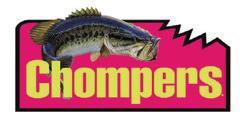





















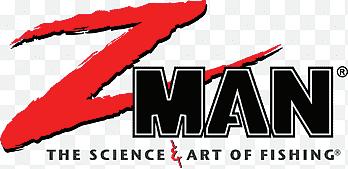











The Missouri Department of Conservation is asking residents who live in Chronic Wasting Disease management counties to help slow the spread and reduce the impact of CWD in Missouri, in part by observing feeding restrictions.
CWD is a fatal neurological disease that infects only deer and other members of the deer family. The disease has no vaccine or cure and is 100 percent fatal.
It is spread from deer to deer, and the potential for transmission increases when deer gather in larger, concen trated numbers. Unnatural congregations of deer in places such as feeders and mineral licks substantially increase the chances of spreading the deadly disease.
“This disease threatens Missouri’s deer herd, hunting traditions, and many business es supported by hunting,” said Franklin County Conservation
Agent Ben Pursley.To reduce the spread, MDC has issued special regulations for the CWD Management Zone. These prohibit the use, year-round, of grain, salt products, minerals and other consumable products often used to attract deer.
In the St. Louis region, the counties where the deer feeding ban applies include St. Charles, Warren, Franklin, Crawford, Washington and Jefferson.
The following exemptions are allowed:
• Feed placed within 100 feet of any residence or occupied building.
• Feed placed in a manner that excludes access by deer.
• Feed and minerals used solely for normal agricultural practices.
• Feed placed as part of a feral hog or CWD management
effort authorized by MDC.
• Don’t feed deer. Feeding deer causes an unnatural congrega tion of animals in one spot and increases the likelihood that an infected deer may spread the disease to others. Feeding of wildlife is permitted within 100 feet of a residence or occupied building, but it is recommended that any feed placed near your home is done so in a manner to exclude deer from accessing it, such as bird feeders six feet or more above the ground and/or feeders designed specifically to exclude deer.
• Don’t put out mineral licks. Mineral licks such as salt blocks, mineral blocks, trophy rocks and other commer cially produced consumable attractants increase the risk of spreading CWD. These types of products are prohibited by law year-round in Management Zone counties.
In September, I had an opportunity to fish with my youngest son. His unit was getting ready to ship to South Korea, so he was granted a week’s worth of leave before the nine-month deployment.
He wanted to spend some time with his grandparents, who still reside in the town that both his father and mother grew up in. The little hamlet is nestled in the Allegheny foothills of northwestern Pennsylvania.
My wife and I made the 10-hour drive from St. Louis to Pittsburgh to pick him up at the airport and then drove another 90 miles north to his grandparents’ place.
While there, the recently promoted Army Specialist (E-4) suggested we do a little fishing. We agreed to fish the creek that I frequented in my youth. A cold-water tributary of the Allegh eny River, the creek is as large as some rivers. A celebrated trout stream, it also has a good population of smallmouth bass.
During the spring and early summer, when the water level is still elevated from the spring rains, it’s a dandy place to catch walleye. When things start to heat up around mid-June, the tasty fish retreat into the deeper, cooler waters of the Allegheny.

Unfortunately for us, it was unseasonably hot for late September and, because of a lack of rain, the creek was well below its normal water levels. We still managed to get in an afternoon of fishing, but our spinners and jigs could not entice a fish into biting.
So we opted for one of my favorite fishing spots as a boy, which was near an old, rusty, train bridge. The shallow rapids above the bridge spill into large, swirling pockets below the structure’s piers.
It is in these deeper pockets where the larger game fish muster. In my younger days, I often fished this part of the creek with my own father.
It was here where I caught my largest small mouth ever. That bronze-back was 22 inches long and weighed over 4 pounds. On that same early June day in 2011, I also watched my father land several nice walleyes, three of which exceeded 20 inches in length.
I remember praising him for being such a fine fisherman. But of course, he humbly gave the credit to his beloved yellow rooster-tails. That would be the last time I’d get to fish with him. Dad passed away in 2019.
During the early to mid-80’s, I spent many afternoons and evenings after school, fishing
this stretch of water. And most of my summer break was spent here. Depending on the season, if I wasn’t down here trying to land a mess of trout, I was usually hunting or exploring the surrounding countryside.
The Allegheny foothills that enveloped this section of the creek teemed with white-tail deer, ruffed grouse, and squirrels, while cottontails and swamp rabbits thrived in the brushy flats beyond the embankments.
Reflecting upon the 40-plus years since I first fished these waters, I was both fulfilled and saddened with the passing of time. In those four decades, I had served in the Marine Corps, married a wonderful woman, raised two fine young men, and recently retired after 26 years as a law enforcement officer.
Yet sadly, such as life can be, I’ve lost my grandparents, parents, and several other family and friends along the way.
Recently, I lost one of my favorite boyhood companions. During the dog days of summer, Andy and I would foolishly climb atop the old bridge and straddle the narrow trestles that stood three stories above the water’s surface. Using recurve bows and old, discarded arrows from the local Archery Club, we would fling the fiberglass shafts at the big, copper-colored carp that were feeding in the shallows below. Every now and then we’d get lucky and stick one. Then we’d have to climb down from the bridge, wade into the knee-deep water, and recover the thrashing, cartwheeling, fish.
Since some of the invasive bottom-feeders weighed more than 10 pounds, I’m certain the raccoons that roamed the creek banks on those nights were delighted by the fish smorgasbord we left behind.
Shortly after graduating from high school in the mid-80’s, we both entered military service and would never hunt or fish together again. Andy would later serve in Desert Storm, and upon his discharge in the early 90’s, he relocated to North Carolina. In 2020, my friend, Andrew J. Harper, passed away at the age of 51. I miss him like a brother.

One of the best fishing stories I’ve ever read was A River Runs Through It by Norman Maclean, which was published in the 1970s. It contains one of my all-time favorite passages:
“Eventually, all things merge into one, and a river runs through it. The river was cut by the world’s great flood and runs over rocks from the basement of time. On some of those rocks are timeless raindrops.
“Under the rocks are the words, and some of the words are theirs. I am haunted by waters.”

























and Text
By BRANDON BUTLEROne of the first pieces of hunting equipment I owned was a Buck 102 knife. It had been my father’s. He gave it to me. Over the years, I’ve notched the sheath each time I took a deer. The line of notches extends the length of the leather blade protector.
A knife plays an important role in the hunting process. It’s a link between the field and dinner table. Hunting seasons
are open across the country. Big game, small game, wa terfowl and upland hunters are collecting the bounty of fall.


The process of turning the game into table fare is, to me, nearly as much fun as the hunt. There are so many ways to use the healthy wild game for food – roasts with potatoes, carrots, mushrooms and onions, steaks on the grill, deep fried turkey nuggets, baked whole birds with wild rice, sausages and jerky.
The process of butchering
your own meat is, like most things in life, improved with experience. With enough practice, one becomes profi cient. The basics are pretty simple, though. Be careful. Understand the process. Have the right equipment. Enjoy the experience. If you have the right equipment from start to finish, the process is going to be much easier and more enjoyable.
Buck Knives recently re leased a list of tips that I read and found to be spot on. I’m
passing on those tips to you with my personal observation of each.
Different types of hunting require different gear. Most bird hunters are not process ing game in the field, but big game hunters are. Big game hunters are gutting, skinning, quartering and caping game. A single knife isn’t ideal for all this work. A bone saw is a big help. Ropes and paracord
Processing wild game is enjoyable when the hunters are properly prepared.
also work well and are helpful in the process, especially if you are alone. You can tie a leg to a tree, truck or rock to keep the animal in place while you work. A lightweight tarp to set your meat on through the process is nice to have. Game bags – cloth bags you put meat in – help keep meat clean and free of insects.
If your knife is as sharp as it should be, then you need to be careful while using it. This begins with not being in a rush. Make a plan and follow the process. As you work through the steps, stay keenly aware of what you are doing.
If you are working with someone else, never cut to ward them. Knife blades slip all the time. Also, don’t pull the knife toward yourself either. If you get tired, take a break. It’s better to walk out at dark after a job well done than to cut yourself or your partner because you were in a hurry. If you are prepared and working wisely, accidents will happen. For this reason, you must carry a proper first aid kit with you.
You can gut a deer with about any knife. The right one makes the job much eas ier. My uncle has carried the
same Buck 110 folding knife since the 1980s. There is no telling how many deer he has processed with that knife.
I use different knives for different processes. I carry a gutting knife and a skinning knife in the field. I also carry a folding bone saw. It has inter changeable blades, so it’s also my tree saw. I usually leave the caping to my taxidermist. Back-country hunters don’t always have that luxury. They need to carry a caping knife, moreso than an eastern deer hunter.
A sharp knife is essential. Trying to process game with a dull blade is miserable. It begins with having a quality knife and taking care of it. There are all kinds of sharp ening tools on the market that make it easy for hunters to keep all their blades sharp. My go-to at home is a small, sandpaper style sharpener made by Work Sharp. But you also need to carry a sharpener with you in the field. A little sharpening stone in your backpack is a must. During in-the-field processing, you can tune up your knife with a few seconds of sharpening.
Brandon Butler’s Driftwood Outdoors podcast can be found at www.driftwoodoutdoors.com or anywhere podcasts are streamed.
What makes ideal big buck habitat? A variety of areas qualify. The five essential elements are food, water, cover, minimal intrusion, and sanctuary.
There are two types of feeding areas. One is a hunting area that ideally goes back into timber where deer have the security of cover on all sides. They are usually kind of secluded. If you open them up, you can make them acces sible to putting up your stands, where you remove the effect of prevailing wind conditions.
The other type of feeding area is important on a small tract of land. On a small tract, you are dependent to some degree on the tracts around you. You want to attract to your land the greatest num ber of deer that your land can possibly hold. Those are recruiting areas.
Recruiting areas must be in places where they attract the greatest number of deer. They will be out in the open.
Warm-season grasses make great cover. You cannot see through it, and it makes a tremendous fawning area. It makes really good dry bed ding.
Select cutting of timber is another good way to create cover. When timber is cut, you end up with a thick,
nasty area. It allows more sunlight into the forest floor, which allows for more under growth. That is what provides the cover.
Water is the lifeblood of every animal. Water can also be like a feeding area. Where found, it effects where you can intercept deer as they approach the water holes. There are some watering holes called rut watering holes. That is when the bucks are chasing the does. She has to go to water and he will follow.
Place your stands in rela tionship to the water holes to which the bucks are chasing the does and in relation to the field where the deer are feeding. If the ground seeps and does not hold water very long, a plastic liner covered with some dirt will allow you to hold water for a long time. Another way is with a child’s pool and some dirt in it, stuck in the ground.
Deer seem to prefer that stagnant water rather than going to the creek. In winter, if you break a hole in the ice, the deer will come to drink. For your area to be the core of a deer’s range, it has to have water of some sort.
When it comes to holding deer, minimum intrusion is the key to holding them yearround. If you are in there all the time, the deer will not stay.
Minimal intrusion means no
ATV or recreational vehicle use. If you consistently are to harvest big bucks, stay out. It also means no coon hunting on the property. Deer and dogs do not get along. The dog is a predator and deer are prey.
The reality is that some deer will leave and some will come back, but that old 7-year-old buck will stay if there is min imal intrusion.
Minimal intrusion also means no timber cutting, no 3D range, no sighting in of rifles, no hiking, no biking or other uses. If your goal is to hold and grow bucks on a small tact, you cannot do all those things. It also means creating a sanctuary area in the center of the property – and never, ever going into it.
Every time you bump a deer, it reduces the chances of harvesting a deer in that location. It may not affect them at all. But it may reduce your chances of seeing them again in that location. When you bump a doe, she will blow at you. The next time she will be looking for you at that lo cation. She will either follow your track or maybe she will circumvent you.
Where bucks go and what they do during the rut de pends upon what those does are doing. So if the does are circumventing you, so too will the bucks.
The biggest fear is that you push that buck over to the next farm. We have to be careful not to bump them over there.
Minimal intrusion also is important in the placement of trail cameras and collecting the cards from them for examina tion at home. Cameras need to be in places where we can get into the area and out again with the least amount of intrusion.
When you place cameras, it is important not to do so in a bad wind, just like when hanging a stand. Watch from a distance rather than going into the area to scout. Some times that is not possible. But when possible, use binoculars instead of walking into your hunting area.
Try to monitor which bucks are visiting which places. At tempt to determine what condi tions exist as to wind direction, etc., and at what time of the day they are using the area. Mon itor everything. Check the direction they enter and leave the area as well as moon con ditions. Write it all down for future reference.
If you are just hunting deer, you need to be out in the field. But if you are hunting big bucks, you need to hunt less but more strategically. Do not over-hunt an area.
Early in the season. hunt the fringe areas and save your best areas for those times when they are most active with big buck movement. That way you do not burn your best spots before they are prime locations for hunting.
One of the ways to hunt fringe is from a box blind. Another is to hunt the fence rows. The deer will follow them looking for a way to cross over.
When using scent attrac tants, it is important to put it in a container and take it with you on each trip. Otherwise, do not use them. Most scent attractants will eventually con taminate your area if you leave them out too long. As scents begin to break down, they take on an odor of ammonia. Deer do not want to be around that smell and eventually it will drive out all the deer.
Rattling in a small area should be used sparingly. Your chances of being spotted are too great. Most of the time, a buck approaches the sound of two bucks fighting from downwind. Most hunters will not even know they have been caught. Try to set up in a position where your back is to some type of cover where you cannot be surprised.
Big deer are out there and some hunters find them. If you want to find them, plan your probe into their territory with some of these tips.

Don Gasaway is a free lance outdoor writer from Marion, IL. Author of over 1,000 magazine articles, he can be found on Facebook at www.facebook.com/#1/Don GasawayWriter and at www. facebook.com/Don’sJournal. Comments and reviews are welcome.
Peanut the Turtle is turn ing 38, and the Missouri Department of Conservation is throwing her a birthday celebration. The birthday partying takes place from 9 a.m. to 2 p.m. on Saturday, Nov. 19 at Powder Valley Nature Center in Kirkwood, free and open to all ages.
Peanut the Turtle has attracted attention all over Missouri, along with national and worldwide fame, as an anti-littering mascot. At a young age, the red-eared slid er wandered into a discarded plastic six-pack ring, and it stuck around her shell.


As her shell grew, it was constricted by the plastic ring
and developed an unusual, figure-eight shape. In 1993, she was found in the St. Louis area and brought to the Saint Louis Zoo, where the ring was removed.
They named her Peanut because of her shell’s shape and gave her to staff at MDC. Peanut has been under the care of MDC since, where she has served as a popular ambassador for litter aware ness. Peanut’s permanent home is now at the nature center.
In the spirit of Peanut’s message, participants can help with litter pickups in and around Powder Valley during her birthday celebration event. “We’ll provide trash bags for participants, and for each bag of trash they collect, they can enter a raffle to win prizes,” Naturalist Shelly Co
latskie said. Participants can also qualify for the raffle by sending photos of themselves picking up litter at other plac es in the area.
The nature center will also serve birthday cake in honor of Peanut’s big day. Educa
tional programs will help make visitors aware of the environmental challenges that plastics pose and inform them about ways they can help prevent Peanut’s fate from happening to other wildlife. Activities will also
include information on Mis souri Stream Teams, crafts, a chance to see live animals and to meet and greet Peanut herself.
The event is free but MDC asks visitors to preregister online at https://short.mdc. mo.gov/4pm.
Peanut the Turtle has been featured in numerous TV sto
ries and newspaper articles, made public appearances at venues like the Missouri State Fair, and even been highlighted internationally on websites like Dodo.com Powder Valley Nature Center is located at 11715 Cragwold Road in Kirkwood, near the intersection of I-270 and I-44.
Bob said, “I hate sage and I won’t eat anything that has it in it!” His wife whis pered,“he’s serious.” More on Bob later.
A few years ago, Mountain Man and I decided to serve a Thanksgiving meal open to all in our community –
those who had no family, couldn’t cook a meal, or just didn’t want to cook a turkey for one or two.
We rented a hall, did a lot of cooking, baked three turkeys and a new yearly tradition began.
Someone asked me, “When are you having it?” and when
I gave them that look my boys all know well, I realized what a hypocrite I was. That’s not how to react to people you are con cerned for when being asked a “duh” kind of question! Yes, it’s on Thanksgiving – that’s the whole point.
Oh my, that is close! I hav en’t even begun to make and dry noodles and don’t have enough bread cubes dried ei
ther. The leftover hoagie rolls and hot dog buns that someone gave me were cut into cubes, dried and then packaged for storage. Once thoroughly dried, they last a long time. It takes a lot to feed 50 people though, so I’ve been visiting my various grocery store bakeries to check out their clearance items to make more. Not only is it cheaper,
but I heard they were almost impossible to find last year.
The dressing recipe that follows has been my go-to for over 40 years. That doesn’t prove it’s good – only that I’m old! Part of what makes it so good is that I use a homemade turkey broth that has cooked for hours. I often cheat and cook up chicken broth well ahead and freeze it – so far it’s gone undetected.

My quantities could be iffy, so this next part is more im portant than the recipe. You may have a recipe that tastes just right, but the texture is always a little off, so consider applying these principles to your own recipe.
If your bread cubes are less dry, they will absorb less liquid, and your eggs may be bigger or smaller. Here’s how I deal with these variables:
Ideally, put this together the night before. Mix it in a large bowl and store it in the refrigerator. The next day, take it out and press down on it. Is it dry or squishy wet? If it’s dry, add a little more broth and stir lightly.
Next, be sure the large casserole dish you cook it in is well buttered. No, I don’t stuff the turkey, because chances are one will get over-done before the other is done. That one is your call, but please use a meat thermometer on the dressing if you’re relying on one of those little pop-ups to tell you the turkey is done.
If you choose a sage sausage, you may want to cut back on the sage in the dressing to only 2 teaspoons. I’m generous with sage in cooking my broth and am not stingy in the dressing.
Last Thanksgiving, Bob came back for two helpings of dressing and grinned, “This is the best dressing ever!” So much for hating sage.

• 8 cups dried bread cubes
• 1 1/2 cups chopped onions
• 1 cup chopped celery
• 5 minced garlic cloves
• 1 pound sausage (your favorite), browned
• Half or 3/4 cup real butter
• 2 eggs, beaten
• 3-4 cups turkey broth
• 3/4 teaspoon salt
• 1/2 teaspoon pepper
• 1/2 teaspoon smoked paprika

• 2 tablespoons dried parsley
• 1 tablespoon dried sage
After browning the sau sage, place it in a large bowl with the spices and stir. Add bread cubes. Depending on how much grease is left in the pan, use all or part of the butter to sauté the onions and celery until softened. Add garlic at the last minute and stir before adding to the bowl.
Add the eggs and give a light stir. Gradually pour in 21/2 to 3 cups of broth until moist. Stir very lightly – don’t compact it if you want a light, fluffy dressing.
The next day, follow the instructions above the recipe and bake in a pre-heated 350F oven for 60-70 minutes. If you don’t want it crispy on top, bake it covered with foil. Test the center – it must reach 165F. Enjoy!
Regarding Thanksgiving: Let’s never forget that in order to give thanks, we must have someone to thank – the source of all that we are grateful for. Give thanks more than once a year in November. Make it a daily practice – it makes life better.
On Aug. 14, Mountain Man left this world to be with His Lord and Savior. I’ll continue to give thanks for how blessed I was to live life with him.
don’t know if you ever played it when you were a kid,
“What if?” was a game
played when we couldn’t think of anything better to do.
was a simple way to pass time and required nothing more than a fertile imagina tion – a component that it seems every kid possesses in abundance.
The game went like this: One youngster would ask a provocative question and others would devise answers, some possible, some not so much.
For instance: “What would happen if Babe Ruth had grandly pointed to the cen ter field bleachers and then struck out?” (He actually hit the home run famously re membered as “Ruth’s called homer.”)
With my youthful imagi nation only dimly visible in the rear-view mirror, I won’t even try to compete in this kid’s game, but I will issue a “What If?” challenge for adults to try.

“What if you traveled to a famous duck hunting area and the birds didn’t come?”
Now by “didn’t come” I don’t mean they just didn’t fly, for any number of reasons, on the day you were there. I mean they just hadn’t migrated to where they had always gone.
What if?
Well, you could sit opti mistically in your blind all day and work on your tan. You could spend the day in deep discussions about current affairs, excluding politics and religion, of course.
While all of these remedies will pass the time, none will bring the ducks.
The only thing that will im prove your fortunes is a good old-fashioned snowstorm several hundred miles north of you – where the ducks are! But that isn’t likely to happen these days. Not with global warming, climate change or whatever they call it, alter ing the weather patterns and disrupting the fall migration.
Whatever your thoughts are on climate change, hold on, don’t flip that page, and remember, we are just playing a game here. So, “What If” climate change is true?
Personally, I have seen
enough and read enough hunting reports from around the country to convince me that something is going on with the weather. I don’t know what is causing it, how long it will last or how much change will occur, but the waterfowl know it, too.
What’s more, waterfowl hunters are getting the same message and reacting the same way the birds are. They are heading north, where the ducks and geese are.
I am old enough to remem ber the halcyon days in south ern Illinois, when as many 500,000 Canada geese spent their winters in the three big refuges along the Mississippi River, and hunters flocked into the famous hunting clubs by the thousands. I remember too when, within the span of five or six years, virtually all those big honkers shifted their win tering grounds 400 miles to the north, to the Illinois-Wiscon sin border, and never returned south. Warming winters and abundant waste grain lured them in, and they stayed.
Now, ducks and geese, while both are classified as waterfowl, are programmed differently. It takes an extend ed period of freezing weather and snow-covered fields to push geese along on their migratory path, and they will quickly return north on a thaw.
Ducks, on the other hand are inclined to migrate south with a north wind on a moonlit night, and they won’t be back until spring.
Only now, with warmer temperatures, more open water and plenty of food, the ducks, as the geese did before them, are hanging up much further north than we can remember. The pattern over the last few seasons has seen the majority of ducks spend the winter months pretty much on a line running through central Nebraska, Missouri, Tennessee, northern Kansas and southern Illinois.
This is bad news for duck hunters, guides and hunting club owners in Arkansas, Mis sissippi, Louisiana and Texas, where, if experience with changing migration holds, these folks will go through painful periods of denial, ac cusation that the big refuges north of them are planting crops to shortstop “their” birds, and finally grudging


acceptance their party is over.
DUCKS ‘UNHUNTABLE’It isn’t especially good news either for hunters in the new areas where the ducks have settled down for the win ter. These birds will quickly become “stale” by learning where it is safe to feed and where danger lies. They will become blind shy, call shy, spinner decoy shy, and often start feeding at night and not stirring off the refuges by day. In short, unhuntable.
The last thing to consider about “What If” climate change in the real world is, “What about the millions, possibly billions, of dollars being spent by various gov ernments and conservation groups to conserve, restore and improve wetland habitat in areas of the flyways that are falling into disuse?”
They have done wonderful work, without doubt, but if the ducks relocate their wintering grounds, then what? Back to square one?

There is no better way to learn trap shooting than with an automatic-feed trap thrower such as the Champion WheelyBird Auto-Feed.
It has lightweight construction on a two-wheeled frame with a pull handle, plus a safe-release switch for operating and disarming.
While it is small and light enough to fit into a vehicle, it can fling targets up to 55 yards away.
The 2-second cycle time provides continuous action, and it uses either 108 or 110 millimeter clays. The foot release is on a 25-foot cord to accommodate varying shooting positions.
Adjustable launch angles mean the shooter can change the shot on the range. It can hold up to 50 clays, meaning fewer reloads.
The WheelyBird lists for $383.96, but some models cost less. Champion traps can be seen at Cabela’s, Bass Pro Shop, Wal-Mart, Midway USA or go online to championtarget.com.
A rate infestation sounds like the end of the world, but there’s something you can do about it. The Ratinator, from Rugged Ranch, is a sturdy, multiple-catch live rat trap that can hold up to 21 rats.

It weighs only 9 pounds, but this is no toy. It can catch a swarm of rats in a few hours. After critters are enticed into either of the two doors, there’s no way they can get out. No poisons are needed.
And if rats aren’t your problem, there are models available that will catch squirrels, mice or chipmunks. An easy-open top lid allows users to release the animals – somewhere far away!
The Ratinator is available at Rural King and from Amazon, where it was priced at $98.97.

Women who want rugged but comfortable hiking boots should check out Ariat’s lineup of stylish hikers, such as the Terrain.

The prices range from $94.95 to $104.95 at ariat.com, more than some, less than others. The boot provides comfort and support in a lightweight package for all-day comfort, and durability.
Features include a lightweight forked shank for support, full grain leather uppers, removable all-day cushioning insoles, a lightweight midsole for shock absorption, a Duratread sole for maximum wear and a padded top collar.
Colors include walnut/serape, taupe, distressed brown/ cheetah and cordovan.
The Terrain and other Ariat boots are available at ariat. com. Men’s sizes are also available.
When temperatures fall, you don’t have to. Stride across icy, snowy surfaces with confidence when you have the lightweight, easily packable Korkers Ice Walker traction devices on your shoes.
Features include 22 replaceable push-through steel spikes that provide durable ice-biting traction.

Dial in the perfect fit and easily adjust on the fly when needed with the Boa L6 lacing system that it wraps from all angles for a fluid fit.
And guess what? Korkers neatly compress to fit into your pockets when they’re not needed. And they’re guaranteed for life.
Small size fits men’s shoe size 6-8 and women’s size 7-9. Medium fits men’s 9-11 and women’s 10-12. Large fits men’s 12-14 and women’s 13+. They weigh only 10 ounces.
Korkers list for $59.95 at REI, in either black or green. A version for runners is $69.95.


If you’re one of those folks who rely on the Farmer’s Almanac for the kinds of information that you can find only on its pages, there’s no need to wait until next year.
Farmer’s Almanac 2023 is available now from Amazon.com for $7.96 in paperback and $15.26 hardbound for the old-timey Trade Edition or $7.99 for the modern edition in paperback only. They’re even offering used versions as low as $5.24 and it’s $5.95 on Kindle – although it seems odd to read an old-timey booklet on such a new-fangled contraption.
It’s the 231st publication of the almanac, which dates back to 1792, when it was established by Robert B. Thomas. Farmers across the nation rely on its weather forecasting, useful infor mation and old wives’ tales.
Barkbox Dog Toys & Treats will send a Barkbox to your dog every month, each with two toys, two bags of all-natural treats, and a chew.
The boxes even follow unique monthly themes. You can select the toy size and exclude certain meats if necessary.
Barkboxes already go to more than a million dogs each month after launching in 2012.
They pledge: “If your pup isn’t happy with their BarkBox, we’ll work with you to make it right.”
A Barkbox Toys and Treats subscription is $35 a month, but 6-month and 12-month plans are available for less. Go to barkbox.com. For individual items, go to barkshop.com.


Hark the herald, there’s no avoiding it – the turkey roasting season is coming right toward us. Be ready this year with the Oster Roaster Oven and its self-basting lid.
The stainless steel roaster is made of alloy steel and handles up to 22 quarts.
The electric roaster cooks turkeys of up to 26 pounds. It can either bake, slow cook or roast and be used to serve. It mea sures 15.6 inches deep, 23.3 inches wide and 11 inches high.
The lid recirculates moisture to keep meats tender and juicy. Afterward, the pan and rack are removable for easy cleaning.
Oster Roaster Oven is currently available for $117.94 at Amazon.com.
Need a gift for the gardener who has every thing? She may not have the Gardeneer Natural Enemy Inflatable Owl Scarecrow, which is just a few breaths away from protecting the fruit and vegetables in her garden from birds and other pests.
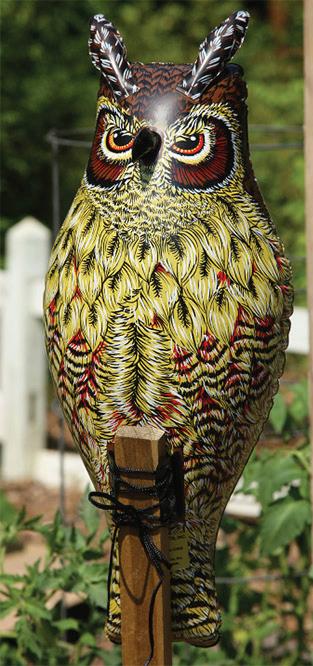
The owls come in a package of three for just $27.99. They work against birds, rabbits and chipmunks without needing pesticides, using bold brown, yellow and black shades instead, with an intent gaze and upright ear tufts.
Each owl is 22 inches tall and has a way of moving in the wind for realism. They fit on poles or square posts or can be hung with string through each ear tuft. They can be repositioned easily to stay effective for years.
The package of three Inflatable Owl Scarecrows is just $27.99 from BestNest.com with free shipping if you order three packages.
Buck Knives is offering something you don’t see every day that may be very useful – a folding fillet knife, called the 220 Silver Creek.
The flexible and lockable blade is titanium-coated steel and measures 6½” inches. The handle is glass-reinforced polypropylene with TPE rubber and a stainless steel guard. A large lanyard loop is provided for carrying. The knife measures 7¼” closed.
The blade can be locked open. Closing requires two hands.
The 220 Silver Creek is available for $41.99 at buckknives.com/product/220-silver-creek-folding-filletknife/0220BLS-B/

Archery is one of the most fulfilling ways to hunt big and small game alike here in Missouri. Over my lifetime, we have had a huge climb in technology in all elements of it.
When I was young, all I ever saw was recurve bows. Then I got older and we got compound bows. Then along came crossbows.
It is amazing what has hap pened, and now the industry has come full circle and is going back to its roots with recurve bows.
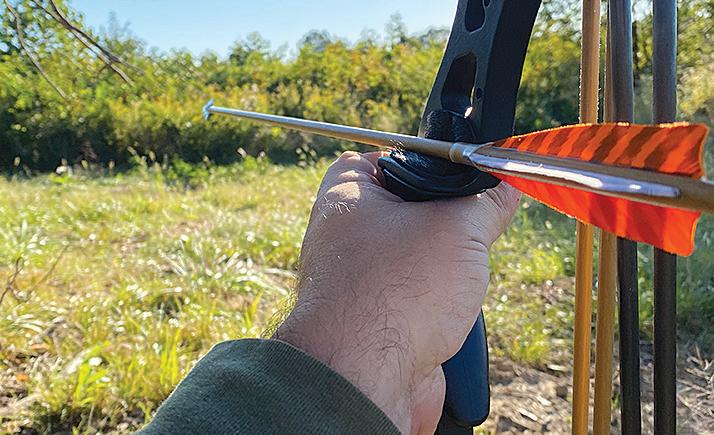
In my early years, the only brand of bows I can remember is Bear bows. They made a top-of-the-line recurve and top-of-the-line compound bows. At the time, to have one of those fancy compound bows seemed unreachable to a small town kid.
Fast forward a few years, and I got my first Bear com pound bow with some fancy carbon arrows. I went from watching my arrows arch slowly to the target to watch ing them zoom flat almost as fast as I could see with the naked eye.
I went on through the years having bows from multiple manufacturers, and they all made nice bows, but I always had that sweet spot for a Fred Bear bow. I bought my first nice bow in my mid-20s when I could actually afford it. I was mind blown by the weight and every other nice thing about it. It caused me to become completely obsessed with bow hunting. I spent every waking moment I could hunting, and it was a great time, but I’m pretty sure I burnt myself out.
A few years ago, the state of Missouri decided to make it legal for everyone to bowhunt with a crossbow. I have always been on the fence about crossbows. Is it really archery hunting? They are so many arguments on both sides of the fence, but as long as you’re within the law. I don’t care what you hunt with.
Before, you could only hunt with one if you had a medical
condition that prevented you from using a typical bow.
Then after a drawn-out pa perwork process, you could get approved to use one. I also believe once they legalized it for everyone, some folks tried it that normally would not have and then just went back to using what they had always used – a regular old compound bow.
Seems kind of silly when you can buy a crossbow now that can effectively kill a whitetail deer at 100 yardsplus at just the squeeze of the trigger. Doesn’t seem like bow hunting to me, but to each their own.
Now that I have talked about compounds and cross bows, I want to talk about recurve/long bows. Recurve/ long bows are two different bows, but they are pretty much the same thing, being stick bows. They both have been around for hundreds and hundreds of years. Wars were fought with them before there ever were firearms.
When it comes to archery hunting and wanting to get as close to nature and the way hunting and gathering was back in the times that folks survived that way, this is how
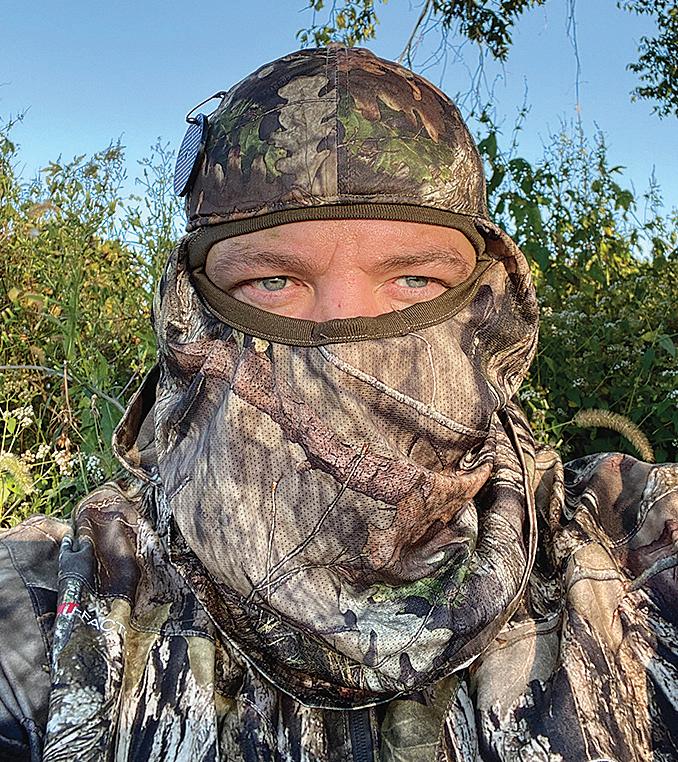
I think you should be doing it. But who am I?
So I have spoken about the many different types of bows and how they have changed over my lifetime. Now I find it very interesting that things have come full circle, not only for me but for hundreds of people all over the country. This past year I bought a Bear recurve at a yard sale for $15. It started something all over again.
I have been shooting it in my yard and hunted with it for the first time last year. It’s been an experience is all I have to say. I had to learn how to shoot in the woods all over again. Your aiming is a world of difference than with a compound. I can honestly say it has whipped my butt more often than not. But I am not afraid of a challenge.
This article has a lot of good information about different ways to hunt with archery. But truth be told, there is no wrong way, as long as you’re doing it safely and accurately. Remember to always practice so you know you can be as accurate as humanly possible and always be safe.
Every year there are hunting accidents, and 90 percent of the time they can be prevented.
So wear a harness, practice climbing your tree stand, practice shooting from your tree stand or wherever you are shooting from, and, God for bid, verify your target before you shoot.
Whether it is a bow or a firearm, it’s the best practice, so we can all come home in one piece. Enjoy this deer season – or whatever hunting season it is in your neck of the woods.


a.m.
Rd, Kirkwood,
Activities will include:
Cake, information on Missouri Stream Teams, crafts, a chance to see live animals, and meet and greet Peanut herself.
Birthday Celebration is free,
MDC asks visitors to preregister
at
November and December are busy months.
Thanksgiving and Christmas are great for making memories with the people you care about most. Connecting with friends, family and loved ones makes our hearts full.
It is also a time of deer stands, deer camps, duck blinds, and pheasant fields. It is a time of taking pictures on our smartphones of successful hunts and sharing them with friends, family and people we don’t even know.

Here in the Midwest, usu ally we can still get out on the water and do a little fishing by boat or bank. Some places, in some years, get cold enough
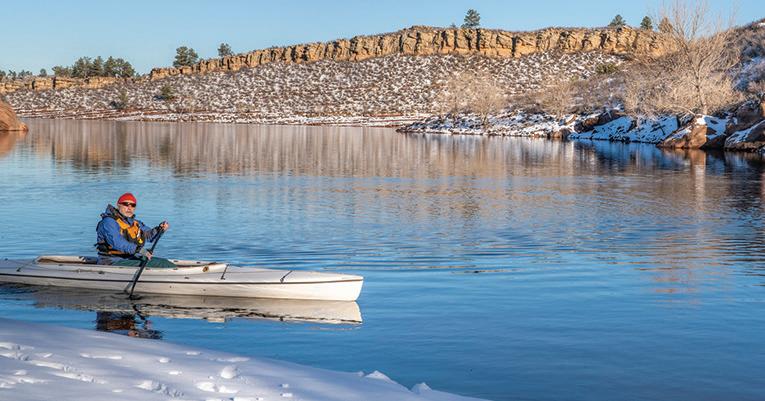
that we fish under the ice. You can even go and gig a sucker fish at night under lights. The reward is frying them up and eating them on the river bank. With proper precautions, going canoeing or kayaking on lakes and rivers this time of year is something you will never forget. You won’t see many people. You will see deer at the water’s edge or along the tree-lined banks. Maybe
an eagle or two will bless you with their presence.
Around a bend in a river, you might get to see a beaver. What you will notice most is the quiet. Most times, the splash of paddles or water lapping up against your canoe or kayak is all you will hear.
This time of year is also a
great time to take a hike. The leaves are gone from trees and bushes. As you hike, that allows you to see wildlife and scenery better than other times of the year. Use your smartphone to take pictures and videos of the sights you see along your hike to share with others or to enjoy later.
It is also a great time to go camping. Some of you are probably saying, “Are you crazy? It can get cold out there in November and December. It might even snow.”
That is true, but if you pre pare for it, you will be fine. You certainly won’t be bothered by other campers. Proper clothing and campfires will keep you warm. So will the peace, quiet and solitude of winter camping. If you are lucky, it will snow. That would make it even more special.
I wish you all a Happy Thanksgiving and a Merry Christmas. I also hope, for your own sakes, that you make time to get out into our great outdoors during this busy time of the year.
“The best and most beauti ful things in the world cannot be seen or even touched. They must be felt with the heart.”
– Helen KellerNov. 8 is election time again. By that time we will be overdosing from political ads. I wish politicians would tell us what they plan to do to get our country back to what it should be instead of constantly slam ming the other person running for the same office.
I think every politician should have to spend more time in the great outdoors fishing, hunting, camping and hiking. Maybe it could cleanse their souls. Boy, do a lot of them
need that! Maybe, they would then truly work for the people who pay them their salaries with our taxes.
In any given election, up to 60 percent of voters don’t vote. That is pretty sad. There are plenty of excuses why they don’t vote. None of them to me are any good. No matter what political party you are, don’t complain if you don’t vote.
Every time I have a success ful deer hunt, I take the time to bend down and put my hand on the deer. I bow and thank it for giving its life to feed my family. The Native Americans also did that.
When I field dress a deer, I cut out the heart and hold it in my hand. A deer’s heart looks exactly like my heart and your heart. It also works the same way in pumping blood through our bodies as it does a deer’s body. Turkey, duck, dove, bear, bobcat, fox, squirrel – and I could go on naming animals all have hearts that look and work like my heart and your heart.
I have a hard time believing it happened that way because of evolution. Think what you want. To me, God did that. I also believe that God created the great outdoors for us to enjoy and take care of. That did not happen because of some cosmic explosion.
Think about all that the next time you field dress a deer. Think about it on Christmas Day. It is much more than a day of presents and family get-togethers. It is to celebrate the day God sent his son Jesus to be born in a manger. That is the real reason for the season.
Larry Whiteley has been an award-winning magazine and newspaper writer for more than 40 years, and now he’s a blogger, too.
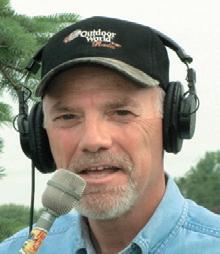

It’s deer hunting time again in Missouri. Hunting began Sept. 15 with archery season, which runs through Nov. 11 and will resume from Nov. 23 through Jan. 15.
The two firearms youth seasons will be Oct. 29-30 and Nov. 25-27. The firearms sea son runs Nov. 12-22 followed by the antlerless season Dec. 3-11. The alternative-methods season runs from Dec. 24 through Jan. 3.
Hunters who were 15 or younger as of Sept. 15 are now exempt from the antler-point restriction during the archery season and all portions of the firearms deer season.
The antler-point restriction has also been removed for Barton and Vernon counties. Hunters may now fill addition al firearms antlerless permits in a number of counties. Get details online at mdc.mo.gov/ hunting-trapping/species/ deer/deer-regulations
The Missouri Department of Conservation (MDC) en courages deer hunters to share their harvests by donating surplus venison to the Share the Harvest program to help feed the hungry.
The program is adminis tered by the Conservation Federation of Missouri and MDC and has provided nearly five million pounds of lean, healthy venison to help the poor since it was started in 1992.
Donating is easy. Take harvested deer to an approved meat processor and let the processor know how much venison to donate. Meat-pro cessing fees are covered en tirely or in part by local and statewide. The donated meat goes to local food banks and food pantries.
The National Institutes of Health says children need protein in their diets for proper growth and development, and adults need it to maintain good health. Through Share the Harvest, Missouri hunters can help provide those in need with high-quality protein. For more information, go online to mdc.com.gov/share.
Chronic wasting disease (CWD) is a deadly, infectious disease in deer and other members of the deer family
(cervids) that eventually kills all animals it infects. There is no vaccine or cure. CWD is in Missouri, and MDC seeks to limit its spread by finding new cases as early as possible and managing the disease to slow its spread.
The CWD Management Zone includes counties where CWD has been found or are nearby. Barton, Greene, Rip ley and Vernon have been added to the zone this year.
The full list of counties includes: Adair, Barry, Barton, Camden, Cedar, Chariton, Christian, Clark, Crawford, Franklin, Gasconade, Greene, Hickory, Howell, Jefferson, Knox, Laclede, Linn, Macon, McDonald, Mercer, Oregon, Ozark, Perry, Polk, Pulaski, Putnam, Ripley, St. Charles, St. Clair, St. Francois, Ste. Genevieve, Stone, Sullivan, Taney, Vernon, Warren, and Washington.
The following special reg ulations apply in CWD Man agement Zone counties:
• Hunters who harvest deer Nov. 12 and 13 in CWD Management Zone counties (except Gasconade, Knox, St. Charles, and Warren) must take the deer or deer head on the day of harvest to an CWD sampling station. Gasconade, Knox, St. Charles and Warren counties are exempt from his rule.
• Use of grain, salt products, minerals and other consumables to attract deer is prohibited year-round in the Management Zone counties.
• Deer harvested from Man agement Zone counties must be reported through Telecheck before they can be removed from the county of harvest.
• Hunters must observe car cass-movement restrictions for deer harvested in CWD Management Zone counties.
Hunters must also follow restrictions when bringing parts of harvested deer and other cervids into Missouri from another state.
• Learn more about CWD and related regulations and restrictions online, plus sam pling and drop-off locations, at mdc.mo.gov/cwd.
• Sampling and testing – To find cases of CWD early and help slow its spread, MDC is again offering free, voluntary CWD sampling and testing of harvested deer during the entire deer season at select
locations throughout the state, including some MDC offices and participating taxidermists and meat processors.
MDC also offers self-ser vice freezer drop-off locations within the CWD Management Zone for hunters to deposit harvested deer heads to have tested for CWD.
MDC reminds hunters that bicycles and certain types of
electric bicycles are allowed on service roads and multi-use trails at about 300 conserva tion areas, including some also open for deer hunting. About 30 of these will be closed to all bicycle use during the firearms deer-hunting season. Bicycle use on most of the approx imately 1,100 conservation areas is restricted to roads open to public vehicle traffic and some multi-use trails. Cyclists may not ride off-road or off-trail.
Multi-use bicycle trails and service roads can be found online at mdc.mo.gov/ discover-nature/places. Bike trails and service roads can be searched for by using the Advanced Search feature. Learn more at mdc.mo.gov/ discover-nature/activities/ bicycling.
Get more information on deer hunting in Missouri
– including seasons, CWD restrictions and other regula tions, permits, methods, where to hunt, and more – from the MDC website at mdc.mo.gov/ hunting-trapping/species/ deer and from the 2022 Fall Deer & Turkey Hunting Regu lations and Information book let, available where permits are sold and on the MDC website.
Buy Missouri hunting and fishing permits from vendors around the state, online at mdc. moc.gov/permits.
The Missouri Department of Conservation has awarded the 2022 St. Louis Regional Logger of the Year award to Jarvis Timber Company of Mineral Point.

The company has consis tently shown a high degree of professionalism, dedication to sustainable logging practices, and an emphasis on safety, MDC said.
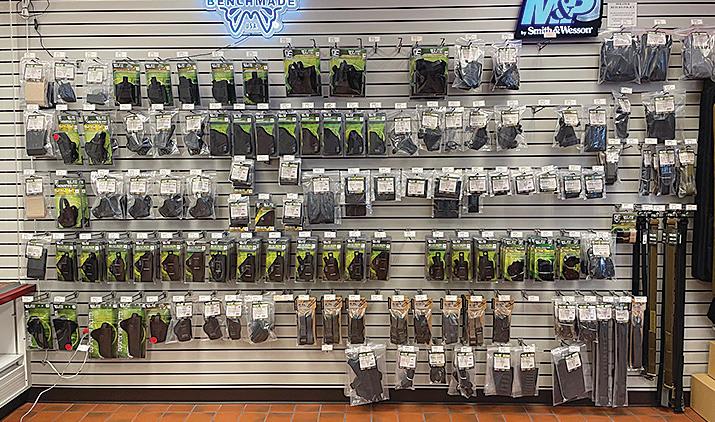
MDC Forester Matt Pilz presented the award to own er Shannon Jarvis and his crew while on a job site near
Bloomsdale. Pilz had also nominated the company for the recognition, having worked with them several times in the past. Mineral Point is in Washington County, just east of Potosi.

“I worked very closely with Shannon on a timber sale at Pea Ridge Conservation Area over the past year, and he and his crew did an outstanding job,” Pilz said. “Those guys are just real professional. They know what the standards for a timber sale should be, and they far

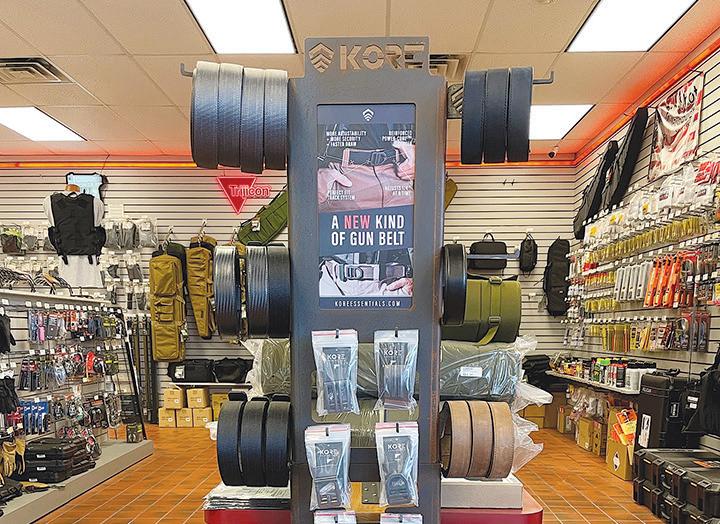
exceed those standards.”
Pilz noted that the Pea Ridge job in particular pro duced a significant amount of slashing in shelterwood stands and along a highway. The contract specified that slashing be four feet or less, but the Jarvis crew consistently cut it much lower to the ground than required.

“This not only has prepped the site for good, unimpeded regeneration, but has also left the stands very aesthetically pleasing,” Pilz said.
In addition to framed cer tificates, each member of the Jarvis crew received a wood cutter’s safety pack consisting of a helmet system, gloves, safety glasses and chainsaw chaps.
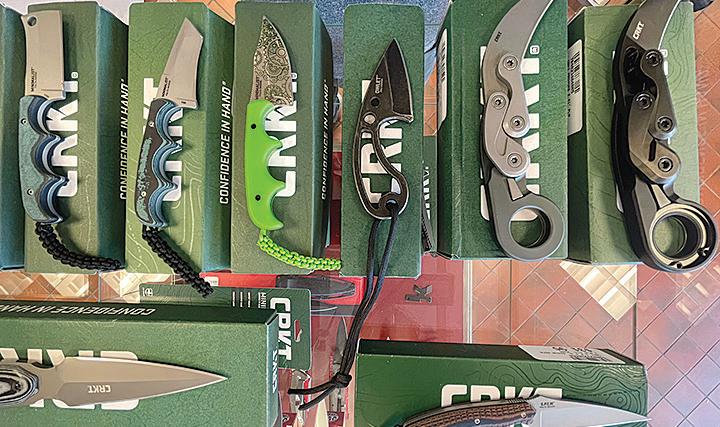



“I’m very appreciative of a great crew. I’ve had them for a long time, and they mean the world to me,” Shannon Jarvis said. Jarvis described himself as a fifth-generation logger, and he remembers getting a start working in the field with his grandfather.
The Regional Logger Award is given to the logger that has demonstrated the ability to carry out a timber harvest in a manner that causes the least impact to the remaining resources on site. The award recognizes loggers who prac tice low-impact logging and

maintain an excellent relation ship with foresters. The extra time and effort they take help to make use of forest resources while preserving those re sources for future generations.
“Shannon and his crew always do a very clean and exceptional job,” Pilz said.




“He’s been a master logger for a number of years, and having that level of certification and that amount of experience re ally shows in the woods with what he does.”
Jarvis said going to work in the woods is almost like not going to work.
“My favorite part of the job is that you’re out in the woods, in nature,” he said. “People come to the woods to go on vacation, but we do it every day. It’s almost like a vacation – other than the work part.”

crossbow deer hunt for residents of the Baptist nursing home in Ironton MO gave sev eral former hunters a chance to get back outside and take
again.
may be the first organized deer hunt for the residents of a nursing home facility in the country,” said Cheyne Matzenbacher, Deer Outreach Specialist for the National Deer Association (NDA).
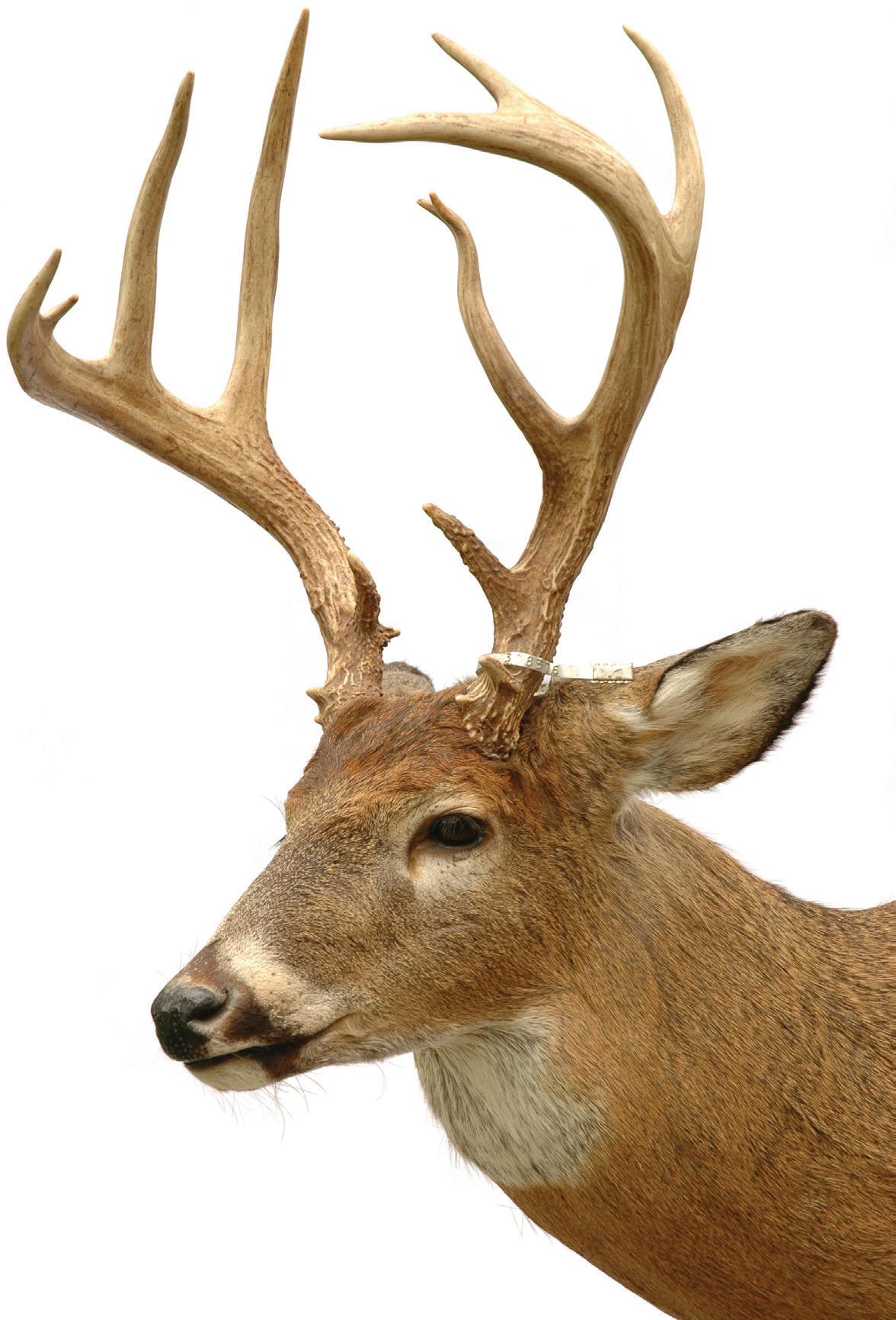


The hunt was for residents of the Baptist Long Term Care Facility and was suggested by Dr. Rodney Harrison, presi dent of the Baptist Home and Healthcare Ministries.
“Years ago I watched ‘Growing Deer TV’ with Dr. Grant Wood,” Harrison re called. “Dr. Wood talked about taking his father on several special deer hunts over the years. One of their last hunts together involved a ground blind and a crossbow.
“I began thinking about sim ilar hunts I had enjoyed with my father in his later years. From those experiences I drew inspiration for organizing hunts for seniors at our longterm care facilities.”
Harrison connected with Matzenbacher to propose a crossbow hunt for seniors, and Matzenbacher jumped at the chance.
“We at NDA did not want to miss this opportunity and were happy to begin the co operative effort,” he said. “It has definitely been one of the most fulfilling highlights of my career with the National Deer Association.”
The association operates a Field to Fork program that seeks to recruit new hunters, retain current hunters and re-activate former ones – and that last element tied it in with Harrison’s idea for a hunt.

Spencer Hutson, a church relations specialist with Bap tist Ministries, rounded up volunteers to help with the hunt. “The response to requests to help was great,” he said. “We needed mentors for the hunt ers and helpers for all kinds of tasks. People volunteered graciously without knowing exactly what they would be doing.”
Matzenbacher and Karlin Gill, the Deer Association Out
reach Specialist for northern Missouri, organized the pro gram. Introductions began at 9 a.m. The duo gave presenta tions about the NDA, covered property rules and invited a local conservation agent to discuss licenses, tagging and reporting requirements.
A few other non-hunting residents joined programs about how hunting fits into conservation, deer biology, hunting etiquette and shot placement. Matzenbacher said the most enjoyable part was listening to the old-timers tell their own deer-hunting stories.
After a venison lunch, the instructors, residents and vol unteers headed to the range for a class on crossbow safety and handling, using provided Mission crossbows.
Retired pastor Fred Davis, 91, was the oldest hunter in the group. Having been an NRA instructor previously in his life, he delighted the crowd by firing bolts into the bullseye.

After lunch, the group headed out to their assigned blinds. Residents and volun teers alike were pumped and ready to hunt.
Well-organized teams trans ported the residents, mentors, and other volunteers with a tricked-out utility vehicle from Cowtown USA, golf carts and pickup trucks. “The smiles on the faces of the residents told the story as they headed out on deer hunts,” said Spencer Hutson of Baptist Ministries. “Most of them had not been hunting in decades.”
The mentors and helpers had radios and cell phones so they could communicate while in the blinds. A couple of blinds reported steady deer activity. But when all was said and done, no one had taken a deer.
“It did not matter,” said participant Johnny Sanders. “I’m simply thankful to be out to see the creation. I can’t be lieve anyone would go to this much trouble so that residents could enjoy a deer hunt. But I live here and have lots of time on my hands. I’ll keep coming back until I kill a deer.”
I personally served as a mentor to Sanders, a World War II veteran and paratrooper who entertained us with stories of his military adventures and of the many big game hunts he had enjoyed with family and friends out west.
A highlight of the event for me came at the very end. The
Rev. Davis – 91 years young – yelled at me as I was leaving the final brunch and heading to my truck. “Hey, Bill,” he said. “If you need any help with your shooting, just call me!”
The crowd roared with laughter. Baptist homes are indeed a place to live rather than a place to die.
For more information about the National Deer Association its Field to Fork program, contact Cheyne Matzenbacher at cheyne@ deerassociation.com.




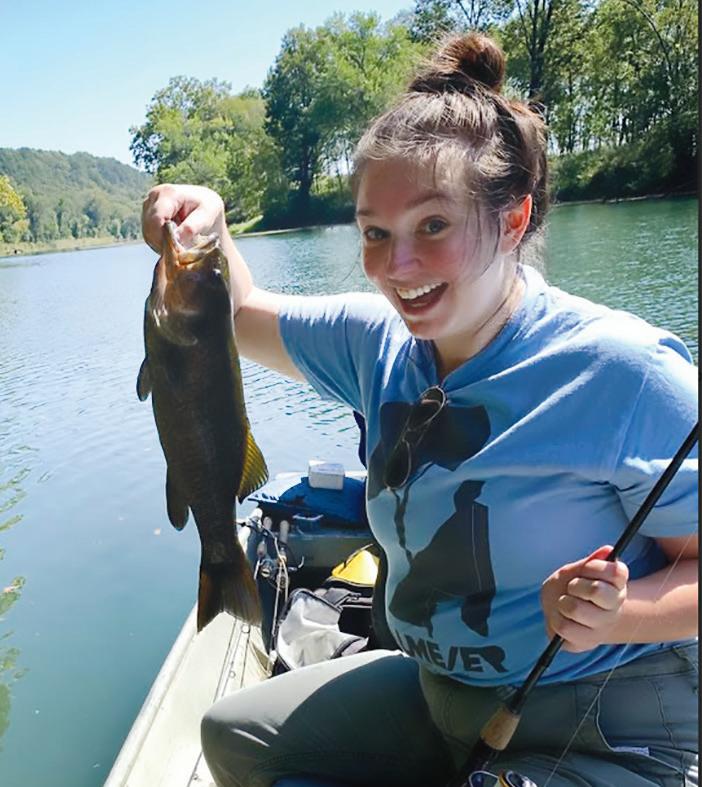

 By TERRY WILSON
Photos by ROXANNE WILSON
By TERRY WILSON
Photos by ROXANNE WILSON
The Farmer’s Almanac warns of a particularly dis agreeable winter for 20222023. The venerable maga zine has forecast some daily records, colder temperatures and above-average snowfall. While the opportunity to wet a line won’t be completely out of the question, this may be the winter for you to augment your fishing passion by learning to tie your flies.
We have long believed that fly tying makes you a better fly fisher. It focuses on all aspects of the fly’s design that are important in attracting fish. Color combinations, fly action, weighted options and buoyancy possibilities all are considerations. Each aspect of the fly requires the person tying to consider what might trigger the fish to respond and how the fly can most effectively be presented.
As with fishing, fly tying can be as sophisticated or simplistic as the practitioner desires. The
fundamentals are easily mas tered and continually repeated throughout the process. Imagine the thrill of catching fish on one of your creations. Whether you are tying an old standard pattern or one of your own designs, that catch means you were able to put the puzzle together so well as to have fooled that fish into believing it was edible. The feeling is priceless.
A good first step in learning to tie flies would be watching someone with the expertise and the ability to teach their tech niques. The best place for this to occur is at a fly-fishing show or expo. Many of the best fly tiers in the world demonstrate and teach their skills at interesting and fun venues in the Midwest.
• Mountain Home, Ark Mountain Home hosts two of the Midwest’s largest conclaves with fly tying at their center. One is the “Sowbug Roundup” that will be March 23-25, 2023, at the Baxter County fairgrounds, where there will be 140 fly tiers in attendance. The Southern Council Federation of Fly fishers International holds the
As with fishing, fly tying can be as sophisticated or as simple as the fisherman desires.

second Mountain Home event each fall. Dates for 2023 were not set as of this writing. It’s also open to the public.
• Clinton MO – On March 11, 2023, the Tri-Lakes Fly Fishers’ Expo will be held at the Benson Convention Center in Clinton. This is a club-sponsored event, and admission and all programs are free to the public. There will be 30 to 40 tiers, programs and
vendors, including fly shops, outfitters and guides. The food is excellent as well.
• Tahlequah, Okla. is the site of the Smallmouth Rendezvous each spring. It’s usually held in late April or early May. The tacos for lunch, served by the Native American Women Fly Fishers, alone are worth atten dance.
Each event has its own per sonality, including programs, events and food. In each case, there is some really good fishing near all of the shows.
Another way to learn to tie flies is to visit a nearby fly shop. Most offer classes and advice concerning hooks, materials, tools, lighting options and tying vises. Since they are in the business of selling fly-tying accessories, they are well qual ified to teach basic tying skills, as they realize the potential for adding to their customer base.
Once you are involved in tying your flies, you are best served by being able to share your thoughts and ideas with others. The best place to ac complish that is in a fly fishing
club. Most local clubs have a web presence where you can learn their meeting dates, times, and locations. Often a contact person you can call or email for more information is listed.
Most clubs conduct monthly meetings that include programs concerning aspects of fly fishing or tying. They also offer regular opportunities to exchange expe riences with like-minded people and opportunities to learn about new fishing places in your area and people with whom to share fishing adventures.

Our club, the Tri-Lakes Flyfishers of Bolivar, MO,
schedules group trips to fishing destinations and leases a pond where members can regularly fish with friends and family. Our pond is managed for blue gill and bass, and we have club outings that usually involve a picnic and fishing.
Fly tying offers an indoor option that provides an exten sion to your fishing activities. This, in addition to improving your fish-catching ability, is a significant inducement to embrace this fascinating en deavor. Spending the forecast nasty winter learning to tie flies may allow you to discover an activity that will lead to a lifetime passion.
*All participants who attend an esti mated 60-90-minute in-home product consultation will receive a S50 Visa gift card. Retail value is S50. Offer sponsored by LeafGuard Holdings Inc. Limit one per household. Company procures, sells, and installs seamless gutter protection. This offer is valid for homeowners over 18 years of age. If married or involved with a life partner, both cohabitating persons must attend and complete presentation together. Participants must have a photo ID and be legally able to enter into a contract. The following persons are not eligible for this offer: employees of Com pany or affiliated companies or entities, their immediate family members, previ ous participants in a Company in-home consultation within the past 12 months and all current and former Company customers. Gift may not be extended, transferred,or substituted except that Company may substitute a gift of equal or greater value if it deems it necessary. Gift card will be mailed to the participant via first class United States Mail within 10 days of receipt of the promotion form. Not valid in conjunction with any other promotion or discount of any kind. Offer not sponsored and is subject to change without notice prior to reservation. Offer not available in the states of CA, IN, PA and MI. Expires 11/30/22.


75%
Installation*
not include cost of material. Expires 11/30/22.

The lady’s voice dripped with frantic distress through the cell phone.
“There’s a huge rat inside my puppy kennel,” she said. “I’ve beaten it away with a mop, but it ran under one of the kennel floors. I can see its nasty face, but the mop handle ain’t long enough to reach it!
“I know if I don’t stay here, it’s going to come out and eat up one of my prized Peekapoos! I need your help, NOW!”
I told the client I was 30 minutes away and to remain on guard until I arrived. I’ve found that if I give clients small homework assign ments, such as monitoring cage traps or keeping a visual on the varmint until I get there, they feel helpful and will do their duty to the letter.
I don’t like rats. They carry and spread more diseases than nearly any other ani mal. So when I have the call to eliminate such vermin, I don’t hesitate. But on this call, I had my suspicions. Rats aren’t
that way. They’re communal. You’ll see several, not just one. I just didn’t think I’d find a Peekapoo playing peek-aboo with a large rat-a-roo!
When I arrived, the lady vigorously waved me into the whelping building and di rected me to a side pen. Here the floor was slightly elevated and covered with plastic grating to allow the puppy’s waste to fall through and permit the miniature mutts to remain clean. She pointed to the area where, as she stated, “that massive animal lies in wait.”
I was able to get on my belly and saw a small 8” by 12” opening that accessed another recess, which went well beyond reach of her mop and my grabbing tongs or catch pole.
I probed the interior with my flashlight and confirmed my suspicion. The lady’s 10-pound New York sewer rat was actually a young, twopound possum, likely preying on puppy kibble.
I contemplated my options. I could disassemble the plastic flooring above the possum, and if the critter remained after all the commotion, snatch it with my tongs. Or, I could locate a length of PVC pipe, fabricate a noose on one end as a catch pole, then wiggle on my belly through puppy poop to get closer to the tiny opening and perhaps reach way back to snare the small trespasser. All I could think was, “Either way, this is gonna suck!”
lady if I could borrow it for a few minutes.
Her eyes widened as she broke into a smile. “You think this will really work?” she asked.
“Ma’am,” I said, “I think we’re about to make history.”
With the rig in place, I focused the light on the mar supial, then snaked the tube back into the recess. Once the end was a few inches from my target, I called for the lady to flip the switch.
Immediately the suction pulled the possum’s front leg into the nozzle up to the shoul der. The once sullen creature was now vigorously trying to overcome the effects of negative pressure and negative traction on a slick, concrete floor. It was like playing a carp in shallow water.

Within seconds I had the possum pulled from the recess and a firm grip on its tail. It was then quickly ushered into an awaiting cage. Job done!
The lady was greatly re lieved – and a bit embarrassed that the beast wasn’t so beastly after all. She was so grateful, she offered to trade one of her designer dogs for services rendered. I declined.
But I did come away with fresh skills and a grand method for wrangling wildlife. Re cently, I called on those skills in a situation at home.
My wife was out of town for a few days. My son Keith and I were on our own, doing the domestic, “Lord of the Manor” thing.
wresting it from the various glaciated packages of un known freezer-burned animal flesh.
Once rescued from the freezing machine, I dutifully thawed, cooked and prepared a feast of the above-mentioned table fare worthy of any so phisticated Neanderthal.
Of course we consumed this at a regular gait, and just about sunrise on the third day, the U.S. Department of Atmo spheric Anomaly and Natural Gas Distribution detected a spike in methane somewhere over Ray County, MO. Not to be concerned, though. It was all organic.
During this period of re newable energy distribution, I discovered the most effective means to handle flying indoor pests. I had about 12 peaches on the counter, and they quick ly morphed from delectable delicacies to disgusting deg radations. In other words, the fruit flies mobbed the peaches faster than teenagers would free ice cream in the cafeteria.
The varmint was more possum than vermin.

Then it hit me. I WOULD make this job suck! I remem bered seeing a large wet/ dry shop-vac just inside the whelping building. I asked the
While assembling the 3-inch nozzle and hose, I remembered my high school freshman science teacher once saying, “A vacuum is nothing more than a negative pressure below atmospheric pressure. With a strong enough vacuum, one could lift an elephant.”
All I wanted was enough suction to pluck a petrified possum.
Before Lola left, she asked what would we like to eat while she was gone.
Seizing the opportunity for massive consumption of pure man-food, I suggested that ham buried somewhere in the freezer. I figured Keith and I could live on ham and beans and cornbread for the better part of a week.
She found it, but I knew it had to be a supreme effort,
Cunning as I am, I made a stealthy approach to the feeding frenzy, being careful not to make eye contact. Then I quickly employed my new found tool and talents in the field of negative pressure, and by thrusting the carpet vacu um hose amongst the swarm, captured all the little pirates in one fell swoop!
Now while it might not be as dramatic as picking up an elephant with a vacuum sweeper, it certainly was like an elephant sucking up circus peanuts. Another successful job from the wildlife wrangler!
But then I wondered, how would this technique work on methane?
 By TIM HUFFMAN
By TIM HUFFMAN
Bluffs are hit-or-miss fishing spots. However, they have the potential to be great fish producers. Check what experts recommend for catching fish from this structure.
• CASTING Casting is fun, and it allows a fisherman to stay away from the fish to avoid spooking them. It allows placing pinpoint casts to productive spots.
A laydown on a deep bluff was the key spot that gave the team of Williams and Jones a Crappie USA Classic win a few years ago.
The situation was timeless. The spot was a bluff with a tree submerged under water. The water was 100 feet deep, but the important part was a tree that had fallen, hung up on the side of the bluff, with the top 40 feet deep.
Fish started the morning in 15 feet of water but immediately moved down to 35 to 40 feet. The team would cast to the rock wall, let their jigs hit the wall and drop straight down before starting their retrieves.
Their technique allowed
them to stay a distance from the tree without spooking the crappie, to fish a specific depth to be in the strike zone, and to work jigs over and through the treetop.
• ROCK SLIDES – A rockslide is where part of the rocks have slid off into the lake. A slide is usually obvious because the bluff will show where the sec tion of the rocks has been. Also, a slide will be a little shallower than the other parts of the bluff. Key spots are often on each side of the slide.
DAN DANNENMUELLERTournament fisherman Dan Dannenmueller fishes in many lakes and rivers across the country. Bluffs are not his goto choice, but he finds some of them to be very productive. He says finding where logs have hung up in the rocks is a high-potential spot.

“Another place to look is where a portion of the bluff has slid down into the water, creating an uneven bottom or ledges,” he said. “Crappie will get on the down-current side and hold. It might take a few minutes to find them on the electronics,



but the ledges and fish should show on sonar.
“I use electronics to find the underwater spots, and I usually spider rig. Multiple poles with multiple baits are good for getting in the right spot and saturating it with baits.
Baits can be held still or moved slowly.
“Fish will be behind rocks and cover to get out of the cur rent,” he added. “When there is no current this time of year, they will likely be suspended up in the water column over structures and ledges created by the slide.”
Dan’s recommended equip ment includes 14-foot BnM poles, each with a double-hook

minnow rig with a single min now hook on top, and a Road Runner with a Bobby Garland Itty Bit tipped with a minnow on the bottom, and Gamma high-vis line in 10-pound- test.
“There are two major reasons for seeking a bluff,” says Tru man Lake guide and tournament fisherman Barry Morrow (660723-2667). “The first is to get out of the wind. The second is to target fish holding on a bluff.
“I usually vertical-jig cover with a standard long pole and plastic jig. The jigs are lifelike targets that catch fish. I’ve used them for decades because they
work. However, a spoon is a good bait, and it gives crappie something different to see.”
On a trip with Barry at Tru man Lake, it didn’t take long for us to catch fish on a spoon.
“A spoon will catch fish, so don’t be afraid to try a small spoonwhen you’re fishing a bluff,” he said. “My best tip would be fish it like you would a jig, with subtle movements, not radical. Jigs are good, but spoons deserve more attention than they get.”
“Casting is one of the best ways to fish a bluff,” says guide Brad Whitehead. “I prefer a BnM 6-foot Sharp shooter, 6-pound-test line and a 1/16-ounce Crappie Magnet jig. I switch to a 1/8-ounce when there is more current or wind.
“Casting to a bluff and work ing a jig down to the cover only leaves the jig in the strike zone for a few seconds. I prefer to cast parallel to the bluff, let the jig fall to the strike zone and work it all the way back to the boat. The jig is in the strike zone a lot longer, so your odds of catching a fish becomes greater.
“Cast up current to present the jig in a more natural way, floating downstream to the fish. The jig is harder to control when it’s drifting with the current, but it can make a big difference in the number of strikes.”
Whitehead uses electronics to find trees and logs hung up in rocks 20 to 40 feet deep. Good electronics will show if fish are on them, he said.
“Wind can be a problem when casting, so I’ll switch to vertical jigging a 1/4- ounce jig,” he said. “The hook hangs less and can be pulled loose when hung up. Use a jig with a thin wire hook that can be pulled loose when hung. The jig lets a fisherman get the bait down into the cover and feel what’s happening.”
These tips from experts don’t guarantee success, but your odds increase when “bluffing” crappie. Enjoy the fun and ex citement this structure can bring.
Tim Huffman has written for Outdoor Guide for over three decades. His new book, Crappie Annual & Product Guide, is available from Grizzly Jig Company, 800-305-9866, Amazon.com or MonsterCrap pie.com.



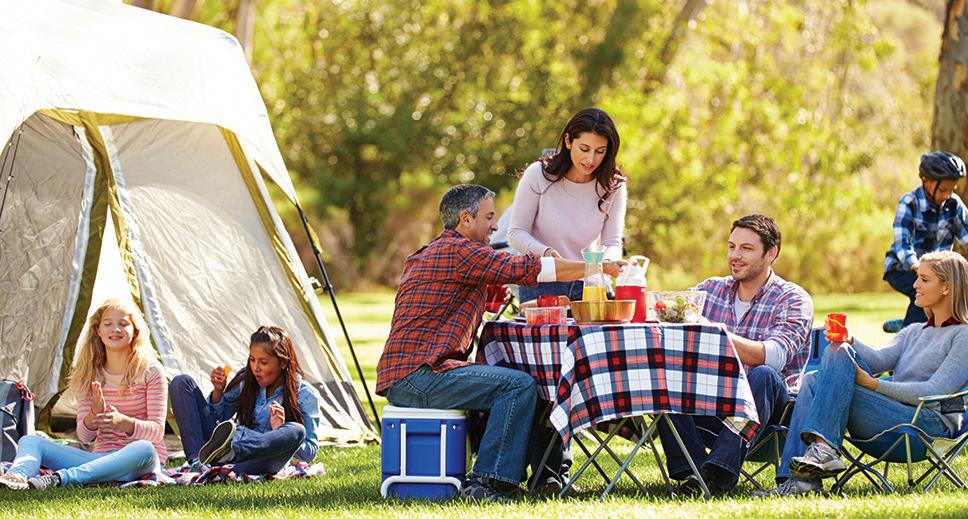




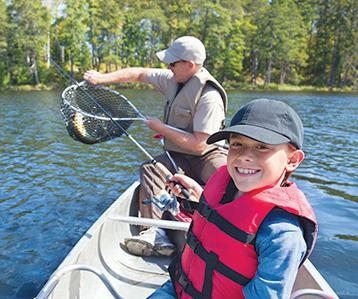

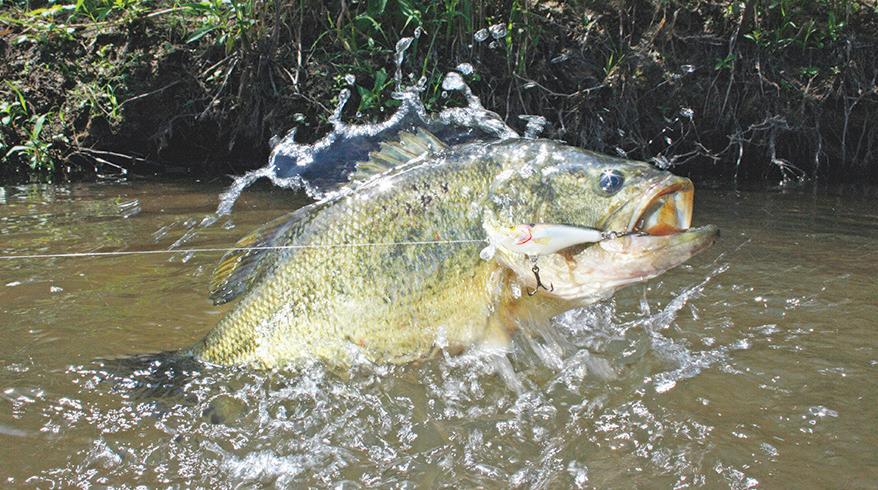





Dry Creek. Pedroncel
Photos and Text By RAY MAXWELLHunting Coastal Blacktail Deer in Sonoma, Calif. wine country above the fog layer is a dream come true and – a return to the roots of Wild Wine Life.
The origins of Wild Wine Life, like a grape vine, go deep and can be traced to deer hunts with members of the Pedron celli family and many of their friends. It was deer hunting with this group that helped inspire the Wild Wine Life concept.
Located in the Dry Creek area of Sonoma, Pedroncelli Winery was founded in 1927 by two Italian immigrants, Giovan ni and Julia Pedroncelli. You can find the fourth generation now working at the winery.
We met our host, Richard Morehouse, a third generation family member, at the winery. Richard showed us the Mother Clone Zinfandel Vineyard. The vines that go into this wine were planted in 1904, and by any definition would be called ancient vines. These are also the vines that provided cuttings for many zinfandel vineyards in
li produces 16 wines, some available only at the winery.
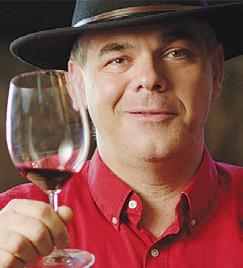
We tasted five wines – Dry Zinfandel Rose 2021, Mother Clone Zinfandel 2020, Cour age Zinfandel 2019, Wisdom Cabernet Sauvignon 2018, and Cabernet Franc 2019.
Pedroncelli was the first win ery in the U.S. to produce a Dry Zinfandel Rose, and when you have been around for 95 years, the rich historical facts can fill any trophy room.

The Rose has a light color and clean, dry finish with strawber ry, cranberry and spice.
The Mother Clone Zinfandel is made from grapes that are sourced from vines in 1904 and younger vines cloned from those vines. This wine brings in nice tannins with crisp acid ity plus berries, bold fruit and spicey notes – a great everyday Zinfandel for anything from pasta to barbeque.
With Courage Zinfandel 2019, you discover a nice 100% Zinfandel wine that is big, bold, and jammy. There is a dried fruit component that provides
some additional complexity to the wine.
Cabernet Franc 2019 pro vides bright, giant fruit, plum, berry, and cocoa with a hint of smoke on the back end. The huge tannins will allow this wine to hold up for years and work wonderfully with the largest steak or wild game dish.
Everyone arrived that same evening, and no deer camp would be complete without the food. We enjoyed grilled venison burgers paired with the Mother Clone Zinfandel and Wisdom Cabernet. Some of the names in the group you will find on various wine bottles in the store, like Buchignani and Teldeschi, old growing families in Dry Creek.
Gooey Butter Cake is my deer camp tradition, and since first hunting with this group in 2005, I have gone from making one cake to baking three cakes for deer camp. We paired the Gooey Butter Cake with Simi Winery Sparkling Brut, since we were in the mood to drink some bubbles and Pedroncelli Four Grapes Port 2008.
The Simi Sparkling is a won derful dry and fruity sparkling wine that pairs with everything; the Pedroncelli Four Grapes Port is a traditional style made port with coco, plum and vanilla flavors.
Like at every deer camp, the dinner was filled with laughter,
predictions about the hunt for the next two days, and swapping other stories.
The ranch we hunted is near Geyser Peak, and above the fog layer. There is a certain awe when you wake up and it feels as though you are hunting deer above the clouds. When the fog does finally burn off, you can see over 60,000 acres planted to vine below you and 11 American Viticultural Areas below you. The hunt also differs from my southern Missouri experience where you sit in a stand the entire time, or what I call “hurry up and wait.”

With large open areas and pockets of wooded area, we set up drives with sitters and walkers. I was fortunate to be a sitter during each of the drive hunts that weekend. I found it
interesting that the blacktail bucks would push the does out in front of them when spooked and then later pop out or double back behind the walkers.
With a little rain just a couple weeks earlier, it was nice to actually see green in the hills, as opposed to the dried grass that you typically see this time of year.
About mid-day, Rick Bu chignani harvested a beautiful 4x3 buck. This would be the only deer harvest that day, and the next day, Mitch Blakeley, one of Richard’s cousins at the winery, harvested his own 4x3 buck, finishing off deer season.
Throughout the hunts, we did see a lot of deer. Most were either does, or bucks that did not meet the minimum antler size. I am not going to complain about not seeing any rattlesnakes while deer hunting.
If you want to truly celebrate a successful hunt, then Venison Tartare paired with a great wine has always been a favorite for our group. We used the tender loins from Rick’s buck and I made Venison Tartare for the group that night and paired it with the Wisdom Cabernet Sauvignon 2018. The long, silky buttery tannins paired very well with the creamy texture of the Tartare. The mushroom notes from the wine with black

fruit, smoke and vanilla on the finish make this a great wine that holds its own against wild game.

I always say that any deer camp that ends safely for all involved, with meat on the table and good times for all involved, is a wonderful experience. En joying the experience in Wine Country truly enhances the entire trip.

Visit Wild Wine Life on Facebook or YouTube for the video version of this hunt and the recipes for Venison Tartare and Gooey Butter Cake. Please “LIKE” Wild Wine Life, Outdoor Guide Magazine and Pedroncelli Winery on Face book or subscribe on YouTube.
It all started with deer hunts herePedroncelli Winery is often higher than the fog along the Pacific coast. Dan Powers cooks venison burgers on the grill, with su pervision by vintner John Teldeschi. Pedroncelli Winery, founded in 1927, produces 16 wines.




